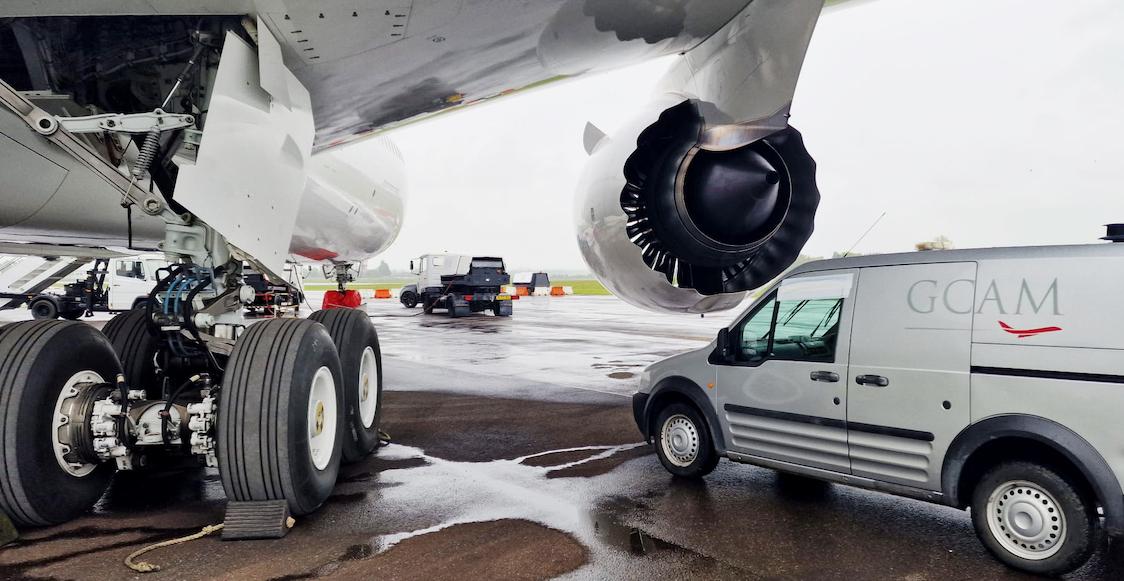
Air Salvage International (ASI) reports that integrating aircraft maintenance and disassembly services have provided logistical advantages and cost efficiencies—especially during the COVID-19 pandemic.
Air Salvage International offers aircraft disassembly services at its facility at Cotswold Airport in Kemble, England, but since developing a Part 145 maintenance organization called GC Aviation Maintenance (GCAM), maintenance and disassembly operations are now coordinated directly, minimizing downtime and inefficiencies through shared resources.
The vast majority, 98%, of aircraft in flight-ready condition arrive at the company’s facilities and go into maintenance, says ASI CEO Mark Gregory, referring to the setup of GCAM . “The authorities didn’t want aircraft arriving ‘live’ for a non-certified company to start taking the aircraft apart, so we developed our own MRO to facilitate the aircraft that arrive at Kemble.”
Without the combination of aircraft maintenance, lease return-related work, storage capabilities and approvals to accept live aircraft, Gregory reckons that ASI’s business would have struggled to stay afloat during the pandemic.
“We had an abundance of aircraft arriving from operators and also lessors for storage,” he says. “Admittedly, probably 80% of them did eventually go down the road of disassembly and the rest went back into service again, so it was vital to have GCAM at that time.”
Depending on the register of the aircraft and internal approvals, engines are usually removed as serviceable, and this also applies to the auxiliary power unit. “That's all done whilst the aircraft is registered under the operator and the CAMO [continuing airworthiness management organization] which issued the instructions for us to carry out the work on the aircraft.”
Gregory says that 95% of the time, instructions are to remove the engines, which is then performed on behalf of the operator. This is because 80% of the value of the aircraft is in engines.
GCAM took delivery in 2024 of the first Boeing 787-9 to undergo a storage program globally. According to AJW, its owner, the aircraft only completed 18 hr. of flying time and it was purchased for AJW’s investment portfolio. The aircraft is currently under a Boeing CAMO storage program with GCAM with engines off-wing.
When it comes to lease returns, lessors typically instruct the operator to move the aircraft to a facility such as GCAM which conducts lease return-related checks before the aircraft is returned to the lessor. Lessors then typically request that engines be removed as serviceable while still on the register.
“Sometimes, the lessor will place the aircraft into storage because they don't know what to do with it,” says Gregory, adding that the lessor might return in a about a month's time after selling the airframe for spare parts. Once the airframe is purchased—usually by a parts trader—it is then moved out of maintenance to go into disassembly.
In other cases where lessors request an aircraft with no engines be removed from storage, they will secure other engines for it ahead of its return to service with the next operator, notes Gregory, adding: “We're quite flexible that way, and that’s because we have GCAM.”
ASI engages with several parts companies, often playing an advisory role on the best parts to salvage based on the company’s previous experience. “For example, we will say to them, ‘[For] the last A320 we disassembled, we moved 800 parts and this is the list of what we removed,’ and the buyer will often request the same, or they just give us a list of their own parts,” Gregory says.
Once parts are removed, they are tagged, photographed and uploaded to the cloud, which Gregory sees as beneficial to customers. “They get live access to the parts coming off the aircraft through a portal and they will see their parts coming off, getting packaged and ready for dispatch,” he says.





